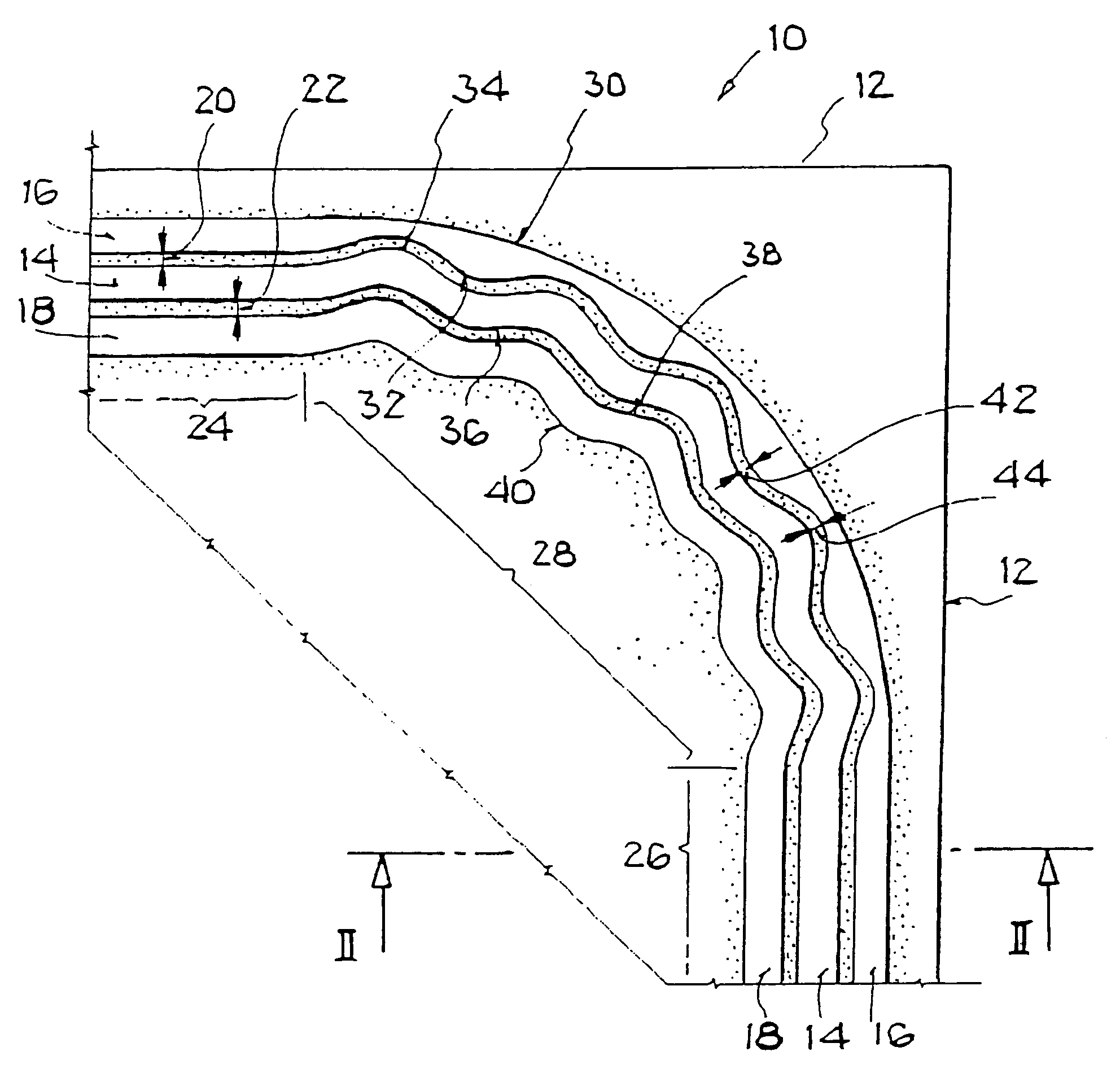Planar microwave line having microstrip conductors with a directional change region including a gap having periodic foldings
a microstrip conductor and directional change technology, applied in the field of planar microwave lines, can solve the problems of undesirable signal corruption, shift in electrical ground zero point, electrical field, etc., and achieve the effect of reducing wave impedance and reducing wave impedan
- Summary
- Abstract
- Description
- Claims
- Application Information
AI Technical Summary
Benefits of technology
Problems solved by technology
Method used
Image
Examples
Embodiment Construction
[0035]FIG. 1 shows a planar microwave line 10 in detail, which extends to a dielectric substrate 12 and has a first microstrip conductor 14 and two additional microstrip conductors 16 and 18. FIG. 1 thereby shows a coplanar line as microwave line 10. The coplanar line corresponds to a planar coaxial line. A first gap 20 between the first microstrip conductor 14 and a second microstrip conductor 16 as an additional microstrip conductor is dimensioned in such a way that during the transmission of microwaves an electromagnetic coupling occurs between the first microstrip conductor 14 and the second microstrip conductor 16. Analogously, a second gap 22 between the first microstrip conductor 14 and a third microstrip conductor 18 as an additional microstrip conductor is dimensioned in such a way that during the transmission of microwaves, an electromagnetic coupling occurs between the first microstrip conductor 14 and the third microstrip conductor 18.
[0036]The first microstrip conductor...
PUM
 Login to View More
Login to View More Abstract
Description
Claims
Application Information
 Login to View More
Login to View More - R&D
- Intellectual Property
- Life Sciences
- Materials
- Tech Scout
- Unparalleled Data Quality
- Higher Quality Content
- 60% Fewer Hallucinations
Browse by: Latest US Patents, China's latest patents, Technical Efficacy Thesaurus, Application Domain, Technology Topic, Popular Technical Reports.
© 2025 PatSnap. All rights reserved.Legal|Privacy policy|Modern Slavery Act Transparency Statement|Sitemap|About US| Contact US: help@patsnap.com



